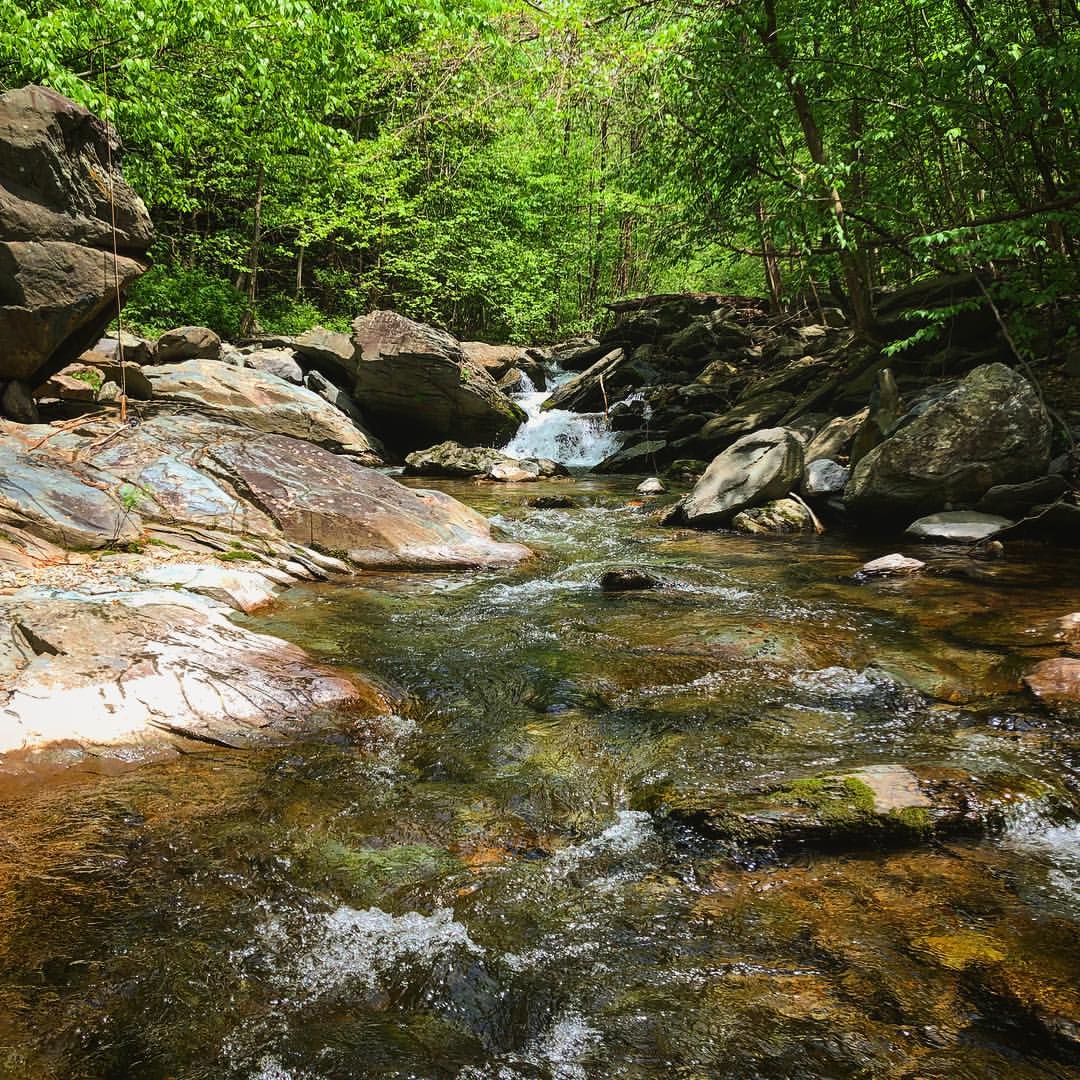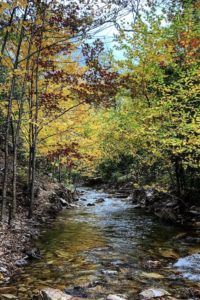In the Smokey Mountains, the Pisgah and Nantahala National forest lies some of the best brook trout streams in North Carolina. Similar to the rest of the South, the brook trout is the only native trout and is one of the most fun to catch. Hiking back to high elevation streams can produce some great fish that see little to no pressure.
Next time you’re in the state you should check out any of these streams lisrted below. Each are great brook trout water, but many of them also hold wild as well as stocked brown and rainbows.
Harpers Creek
Located in the Pisgah National Forest, Harpers Creek produces great brook trout fishing. The hike is not too far but it is long enough to keep out some anglers. The stream will can get busy because of how pretty the hike can be and for the great native brookies you can catch.
This is a catch and release only stream and no live bait can be used. There are some great plunge pools that an angler of any skill level can pick apart and catch fish out of. The boulders and elevation can get steep and slippery in some spots so be careful when working upstream.
It’s recommended you bring some food and water when fishing this stream since it is a decent hike from the trailhead and parking lot. You should be doing this anyway because you’ll want to spend most of the day hiking and fishing here.
Davidson River
The Davidson is known for its big brown trout, but its brook trout fishing is a well-kept secret. Arguably one of the best brook trout streams in North Carolina, the Davidson is located in the Pisgah National Forest not too far from Asheville.
Since it is such a well-known river and so close to Asheville you can expect to see some other anglers out there. Especially during the spring and fall when the weather is the most comfortable. Getting out there early and avoiding weekends if possible will give you the best opportunity for fishing. However, that can be a tall order to ask.
Summer and Fall can be productive. Terrestrials in the summer and nymphs in the winter will be your ticket to catching fish. Make sure to check that you’re in season before fishing here though.
South Mills River
Also located in the Pisgah National Forest, the South Mills is not far from Asheville and is designated as wild trout water. The banks of the river are thick with laurel, making it difficult to access in spots. Either push your way through the branches or keep a close eye out for easy entry points.
The river itself is pretty steady with very few pools. The small, occasional rapids will break up the river and can produce some decent fishing downstream of them. Hitting plunge pool and after pool might be difficult in this river since they are few and far between. Look for any deep sections that fish may hide or behind any current breaks.
The laurel is thick so use a smaller rod and practice your bow and arrow and roll casting before coming. Bring a lot of flies because there is a chance you will lose several in the surrounding branches and leaves. Besides this though there is plenty of great fishing and wild trout to be caught.
Wilsons Creek
The lower section of the stream is heavily stocked by the state of North Carolina. The headwaters are classified as wild trout water and native brook trout with rainbows and browns can be caught.
The headwaters are going to be your classic mountain trout stream. Pools plunges, and runs are everywhere but the biggest problem is access. It can be a long hike, and a map or some serious studying of the trails is required. The good news is that normally keeps out the crowds and allows you to pick and choose any spots you want.
There is also a delayed harvest section that is just south of lost cove creek bridge. This can get extremely popular during the season so be prepared to get there early. Also, learning when the stocker trucks come and loads the river will help since it can get fished out pretty quickly.
Raven Fork
There is two main sections of this river. Inside and outside the Great Smokey Mountains National park. The one inside the park is more difficult to access than the one outside that is located in the Cherokee Tribal Waters. If you plan on fishing in the Tribal waters section then a special permit is required. This section is stocked and it is not uncommon to see 20 inch rainbows in here.
The section of river inside the park could arguably be one of the best brook trout streams in North Carolina. It is going to require some leg work to get there though. This is perfect to help keep the crowds away, so you usually will only see the hardcore fly angers up there on the river.
In this section you’ll find steep plunge pools, waterfalls as well as deep holes that can hide large brookies. The fish up here are asd wild as wild can get so you need to be very stealthy when approaching these pools. Any sight of you or your rod and these fish will dart under a rock.
This can be a day trip, but you should parlay it into a camping trip. It’s a long hike in and out.
Best Flies to Use
When the weather turns cold look to start using more zebra midges, pheasant tails and rainbow warriors. These will help you from getting skunked during those cold days. In the summer terrestrials are key. Drop a san juan worm underneath a foam beetle or drift a floating ant across a plunge pool. Adams are great when insects are flying in the spring and fall.
Final Thoughts
North Carolina has some great Brook Trout Fishing. The entire western side of the state is open to anglers and if you’re visiting then you should take advantage of it. The best brook trout streams in North Carolina will always be the one that you can get to. Have you fished there before? Any spots I missed? Comment below and let me know!



